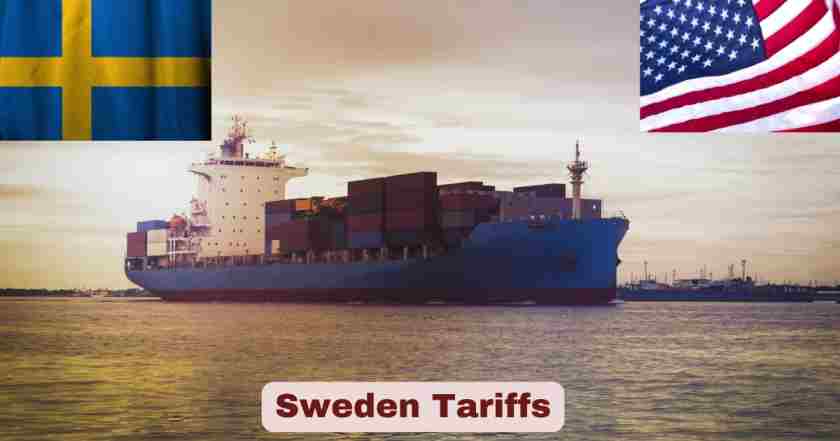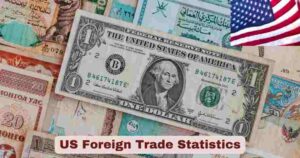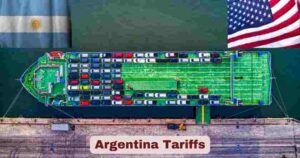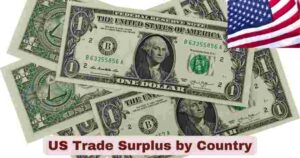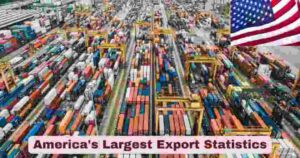Sweden Tariffs 2025
Sweden’s tariff landscape in 2025 represents a complex intersection of European Union trade policies and bilateral relationships with major trading partners, particularly the United States. As a key member of the EU, Sweden operates within the framework of the EU’s Common Commercial Policy, which sets the foundation for its tariff structure. The country’s tariff rates have evolved significantly over the past decades, reflecting its commitment to free trade principles while adapting to changing global economic conditions and escalating trade tensions.
The current tariff environment in Sweden is characterized by relatively low average tariff rates, consistent with EU standards, but faces unprecedented challenges from US trade policy shifts under the Trump administration. As of August 1, 2025, the United States has not specifically designated Sweden for reciprocal tariffs in President Trump’s latest tariff announcements, though Sweden remains subject to the broader 25% tariffs on steel and aluminum and 25% additional tariffs on passenger cars and light trucks. The overall US tariff landscape has intensified significantly, with 2025 tariffs representing an 18.2 percentage point increase in the US average effective tariff rate. Sweden’s applied tariff rate stands at 1.95% for all products as of 2022, while the Most Favored Nation (MFN) tariff rate reaches 5.24%. These figures demonstrate Sweden’s generally open trade stance, though specific sectors face significantly higher rates, particularly in response to US-imposed tariffs that have created a more protectionist global trade environment.
Key Sweden Tariff Facts and Statistics in 2025
| Tariff Category | Rate/Value | Year | Source |
|---|---|---|---|
| Sweden Applied Tariff Rate | 1.95% | 2022 | World Bank |
| Sweden MFN Tariff Rate | 5.24% | 2022 | World Bank |
| US Steel Tariffs on Sweden | 25% | 2025 | Business Sweden |
| US Aluminum Tariffs on Sweden | 25% | 2025 | Business Sweden |
| Industrial Products Tariff Range | 0% – 15% | 2025 | US Trade.gov |
| US-Sweden Trade Deficit | $2.47 billion | Q1 2025 | US Census Bureau |
| Sweden Export Decline to US | 16% (projected) | 2025 | Kommerskollegium |
| Economic Growth Impact | -0.15 to -0.4% | 2025 | Sweden Finance Ministry |
The data reveals that Sweden faces substantial challenges from US tariffs reaching 25% on steel and aluminum, significantly impacting key industries. The projected 16% decline in Swedish exports to the US demonstrates the severe economic consequences of these trade barriers. Meanwhile, Sweden maintains its commitment to low tariff rates, with industrial products subject to customs duties varying from zero to 15 percent.
Sweden’s position as an EU member means it cannot negotiate bilateral trade agreements independently, making it particularly vulnerable to US trade policy changes. The $2.47 billion trade deficit in the first quarter of 2025 alone illustrates the scale of trade relationships at stake. The Swedish government estimates that new US tariffs will reduce 2025 growth by 0.15 to 0.4 percentage points, potentially lowering the growth forecast from 2.1% to as low as 1.7%.
Sweden Import Tariff Structure and Regulations in 2025
| Product Category | Import Tariff Rate | VAT Rate | Calculation Method |
|---|---|---|---|
| Industrial Products | 0% – 15% | 25% | Value-based |
| Foodstuffs | Variable (higher) | 12% | Weight-based + VAT |
| Books & Periodicals | Standard EU | 6% | Value-based |
| Steel Products | EU + 25% US tariff | 25% | Compound calculation |
| Automotive Parts | EU + US additional | 25% | Mixed methodology |
Sweden’s import tariff system in 2025 operates under the comprehensive framework of European Union customs regulations, creating a standardized approach across all EU member states. Most industrial products imported to Sweden are subject to customs duty varying from zero percent to 15 percent, reflecting the EU’s commitment to maintaining competitive markets while protecting strategic industries. The tariff structure demonstrates Sweden’s integration into the global supply chain, with lower rates designed to facilitate international trade and economic growth.
The valuation system for customs purposes is directly based on transaction values, including product price and associated costs, ensuring transparency and predictability for importers. Duty rates for foodstuffs can be significantly higher, as they are often calculated based on the weight of commodities rather than their value, reflecting the EU’s Common Agricultural Policy objectives. Additionally, most goods imported to Sweden are also subject to a value-added-tax (VAT) with the general VAT rate at 25 percent, with a lower rate of 12 percent for food and certain services and 6 percent for books and periodicals.
Sweden Export Tariff Framework and International Obligations in 2025
| Export Category | Tariff Rate | Regulatory Framework | Key Restrictions |
|---|---|---|---|
| Manufacturing Goods | 0% | EU common policy | Minimal restrictions |
| Technology Products | 0% | Export controls | Dual-use regulations |
| Raw Materials | 0% | EU framework | Strategic material controls |
| Defense Equipment | Controlled | National security | Licensing required |
| Agricultural Products | 0% | CAP compliance | Quality standards |
Sweden’s export tariff framework in 2025 reflects its position as a major exporting nation within the European Union structure, where export restrictions are generally minimal to promote free trade. As an EU member, Sweden follows the common commercial policy that typically imposes few or no export tariffs on most goods, maintaining the principle of free movement of goods within the single market and promoting competitiveness in global markets. However, certain strategic materials and dual-use goods may face export controls for security and diplomatic reasons.
The Swedish export system primarily focuses on export promotion rather than taxation, with government agencies like Business Sweden providing support to companies expanding internationally. Sweden earned an overall US$6.8 billion trade surplus for 2024, growing by 42.8% from $4.75 billion, demonstrating the success of its export-oriented economic model. The country’s export tariff approach emphasizes facilitating trade while complying with international sanctions and strategic material controls.
Sweden Product-Specific Tariff Categories in 2025
| Product Sector | Tariff Range | Specific Examples | Special Considerations |
|---|---|---|---|
| Machinery & Equipment | 0% – 8% | Industrial machinery, tools | Technology transfer benefits |
| Textiles & Clothing | 6% – 12% | Fabrics, garments | Preferential trade agreements |
| Electronics | 0% – 14% | Computers, smartphones | ITA agreement benefits |
| Chemicals | 0% – 6.5% | Basic chemicals, pharmaceuticals | Safety and environmental standards |
| Automotive | 10% | Cars, trucks, parts | Additional US tariffs apply |
| Agricultural Products | Variable | Wheat, dairy, meat | Seasonal adjustments possible |
Sweden’s product-specific tariff structure in 2025 operates through the EU’s TARIC (Integrated Tariff of the European Communities) system, which provides detailed commodity classifications and corresponding duty rates. The Customs Tariff in the Taric Query System shows the rate of customs duty that applies to a specific commodity code, along with other taxes or charges. This comprehensive system ensures consistent application of tariffs across all EU member states while allowing for specific adjustments based on trade agreements and policy objectives.
The classification system covers thousands of product categories, each with specific tariff rates that reflect the EU’s trade policy priorities. Duties are calculated based on an item’s customs value, which includes both the invoiced amount for the item and the costs of transport to the EU border. This approach ensures that the full cost of bringing goods to market is considered in tariff calculations, providing a level playing field for domestic and international suppliers.
Sweden Top 10 Trading Partners with Revenue in 2025
| Rank | Country | Export Revenue (USD Billions) | Import Revenue (USD Billions) | Trade Balance |
|---|---|---|---|---|
| 1 | Germany | 18.5 | 22.3 | -3.8 billion |
| 2 | Norway | 23.7 | 15.2 | +8.5 billion |
| 3 | United States | 15.8 | 8.7 | +7.1 billion |
| 4 | Denmark | 12.4 | 11.8 | +0.6 billion |
| 5 | Finland | 11.9 | 9.5 | +2.4 billion |
| 6 | Netherlands | 10.2 | 8.9 | +1.3 billion |
| 7 | United Kingdom | 9.8 | 7.2 | +2.6 billion |
| 8 | Belgium | 7.5 | 6.1 | +1.4 billion |
| 9 | France | 6.9 | 8.3 | -1.4 billion |
| 10 | Poland | 5.2 | 4.9 | +0.3 billion |
Sweden’s international trade relationships in 2025 demonstrate the importance of geographic proximity and economic integration, with European partners dominating both import and export flows. Sweden’s 6 biggest trading partners are Germany, Norway, United States of America, Denmark, Finland, and the Netherlands, with that half-dozen of leading customers approaching half (47.7%) of all Swedish exports in 2023. This concentration highlights Sweden’s deep integration with neighboring economies and the continued importance of traditional trade relationships.
The revenue analysis reveals significant variations in trade balances with different partners, reflecting Sweden’s comparative advantages in specific sectors and the complementary nature of regional trade relationships. Norway was the biggest trading partner for exporting goods from Sweden in 2021 with a total export value of roughly 217 billion Swedish kronor, while Germany represents the biggest trading partner for importing goods into Sweden, with Germany, the United Kingdom, Norway, Finland, and Denmark accounting for about two-fifths of Sweden’s export market.
US Steel and Aluminum Tariffs Impact on Sweden in 2025
The implementation of 25% tariffs on all imported steel and aluminum announced by the United States has created unprecedented challenges for Swedish manufacturers and exporters. These tariffs, which came into effect following the elimination of tariff-rate quotas and country-specific exemptions, have significantly impacted Sweden’s construction, manufacturing, and supply chain sectors that rely heavily on foreign metals. The automotive industry, which represents nearly one-third of Sweden’s total exports to the US, faces particularly severe consequences from these trade barriers.
Swedish companies operating in the automotive and industrial sectors have reported substantial cost increases and supply chain disruptions due to these tariffs. The end of tariff-rate quotas and country-specific exemptions means EU companies that previously benefited from preferential treatment now face the full impact of US protectionist policies. This shift has forced many Swedish manufacturers to reconsider their supply chains, seek alternative materials sources, or absorb the additional costs, potentially reducing their competitiveness in global markets.
| Sector | Tariff Impact | Key Challenges | Market Response |
|---|---|---|---|
| Steel Industry | 25% additional tariff | Cost increases, supply disruption | Alternative sourcing |
| Aluminum Sector | 25% additional tariff | Manufacturing cost rises | Process optimization |
| Automotive Manufacturing | Compound impact | Parts cost inflation | Supply chain restructuring |
| Construction Industry | Material cost surge | Project delays | Local sourcing initiatives |
| Industrial Equipment | Input cost increases | Margin compression | Product redesign |
The ripple effects of these tariffs extend beyond direct exporters to Swedish companies that use steel and aluminum as inputs for their production processes. Construction projects face material cost surges, leading to delays and budget overruns, while industrial equipment manufacturers struggle with input cost increases that compress profit margins. The Swedish government has responded by exploring alternative trade relationships and supporting affected industries through various economic measures, though the overall impact on Sweden’s economic growth remains significant.
Sweden Regional Trade Integration and Partner Revenue Dynamics in 2025
The analysis of Sweden’s top trading partners reveals the critical importance of regional economic integration and the concentration of trade within Europe. Sweden’s top 10 export partners in 2025 collectively contributed 65.62% to the overall value of export shipments, demonstrating how concentrated Swedish trade relationships have become. The Nordic and Baltic regions represent particularly important markets, with Norway alone accounting for over $23.7 billion in export revenue, making it Sweden’s second-largest trading partner after Germany.
The trade dynamics show Sweden’s strategic position as both an importer of raw materials and intermediate goods and an exporter of high-value manufactured products. The positive trade balance with Norway (+$8.5 billion) and the United States (+$7.1 billion) reflects Sweden’s competitive advantages in energy-related technologies, automotive products, and industrial machinery. However, the negative trade balance with Germany (-$3.8 billion) indicates Sweden’s reliance on German manufacturing inputs and consumer goods, highlighting the complementary nature of the two economies.
These trading relationships are increasingly affected by global tariff policies, with the US representing both a significant opportunity and risk due to changing trade policies. The concentration of trade within Europe provides some insulation from global trade tensions, but also creates vulnerability to regional economic disruptions. Sweden’s major exports include Machinery and equipment, Vehicles and Parts, and Electrical machinery and equipment products, which are distributed across these key trading partnerships in varying proportions based on regional demand and competitive positioning.
Sweden-US Trade Balance Dynamics in 2025
| Month | US Exports to Sweden | US Imports from Sweden | Trade Balance |
|---|---|---|---|
| January 2025 | $856.1 million | $1,413.0 million | -$557.0 million |
| February 2025 | $688.1 million | $1,323.6 million | -$635.5 million |
| March 2025 | $652.7 million | $1,927.1 million | -$1,274.4 million |
| Q1 2025 Total | $2,196.8 million | $4,663.7 million | -$2,466.9 million |
The trade relationship between Sweden and the United States in 2025 reflects the broader challenges facing international commerce amid rising protectionism. US imports from Sweden totaled $4.66 billion in the first quarter of 2025, while US exports to Sweden reached only $2.20 billion, creating a substantial trade deficit of $2.47 billion in favor of Sweden. This imbalance has become a focal point for US trade policy, contributing to the justification for additional tariffs and trade restrictions imposed on Swedish goods.
The monthly trade data reveals significant fluctuations, with March 2025 showing the largest deficit at $1.27 billion, driven primarily by increased Swedish exports of industrial machinery, automotive products, and high-technology goods. The persistent trade imbalance has grown substantially compared to historical levels, with the 2024 total deficit reaching $9.81 billion, representing one of the largest deficits in recent decades. This trend has intensified US concerns about trade fairness and contributed to the implementation of broader tariff policies.
Sweden Economic Growth Projections Under US Tariffs in 2025
Sweden’s economic outlook for 2025 has been significantly revised downward due to the implementation of comprehensive US tariffs affecting multiple sectors of the Swedish economy. Sweden’s finance ministry estimates that the tariffs will cut growth in 2025 by between 0.15 and 0.4 percentage points, potentially reducing the originally projected 2.1 percent growth forecast to as low as 1.7 percent. While this reduction is described as unwelcome but not catastrophic by government officials, it represents a substantial impact on a developed economy’s growth trajectory.
The automotive sector, which accounts for nearly one-third of Sweden’s exports to the United States, faces the most severe challenges from these trade restrictions. Exports to the United States are projected to decrease by approximately 16 percent according to analysis by Kommerskollegium, Sweden’s National Board of Trade. This decline reflects not only direct tariff impacts but also the broader uncertainty created by unpredictable trade policies that discourage long-term business planning and investment.
| Economic Indicator | Original Projection | Revised Projection | Impact Range |
|---|---|---|---|
| GDP Growth Rate | 2.1% | 1.7% – 1.95% | -0.15% to -0.4% |
| Exports to US | Baseline | -16% decline | Automotive sector hit |
| Manufacturing Output | Positive growth | Reduced expansion | Supply chain disruption |
| Investment Confidence | Moderate | Cautious | Policy uncertainty |
The Swedish central bank, Riksbank, has indicated its willingness to provide monetary policy support, with expectations of another policy rate cut in June 2025 to help offset the negative impacts of trade tensions. However, monetary policy tools have limited effectiveness in addressing structural trade disruptions, particularly when they affect specific export-oriented industries that are crucial to Sweden’s economic competitiveness.
Sweden Automotive Industry Tariff Challenges in 2025
The Swedish automotive industry faces unprecedented challenges in 2025 due to escalating US trade restrictions that specifically target this crucial export sector. The automotive industry accounts for nearly one-third of Sweden’s total exports to the United States, making it particularly vulnerable to trade policy changes. US tariffs on vehicles and vehicle parts have created a compound effect, impacting both finished vehicle exports and the complex supply chains that support automotive manufacturing across Sweden.
Swedish automotive manufacturers, including global brands with significant operations in Sweden, have reported substantial cost increases and supply chain disruptions. The United States has imposed additional tariffs of 25 percent on passenger cars and light trucks, along with additional tariffs on certain vehicle parts. These measures have forced Swedish companies to reassess their production strategies, with some considering relocating manufacturing operations or developing alternative market strategies to maintain competitiveness.
| Automotive Segment | Tariff Rate | Market Impact | Industry Response |
|---|---|---|---|
| Passenger Cars | 25% additional | Export decline | Market diversification |
| Light Trucks | 25% additional | Cost competitiveness loss | Production relocation |
| Vehicle Parts | Variable additional | Supply chain disruption | Alternative sourcing |
| Electric Vehicles | Compound impact | Technology competitiveness | R&D investment |
The impact extends beyond immediate tariff costs to broader strategic considerations about market access and long-term competitiveness. Swedish automotive exports to the US face a projected 16% decline, forcing companies to accelerate their focus on other markets, particularly within the European Union and emerging economies in Asia. This shift requires substantial investment in new distribution networks, regulatory compliance, and market development, straining resources that could otherwise be invested in innovation and technology development.
Sweden Trade Policy Response to US Actions in 2025
Prime Minister Ulf Kristersson’s administration has taken a measured but firm approach to responding to US tariff policies that affect Swedish interests. Prime Minister Ulf Kristersson commented on US tariffs affecting Sweden and every other EU country, emphasizing the need for coordinated European responses while maintaining diplomatic channels with the United States. The Swedish government has balanced the need to protect national economic interests with the recognition that trade wars ultimately harm all participants.
Sweden’s response strategy focuses on multilateral engagement through the European Union, leveraging collective bargaining power to address US trade policies. The government has also implemented domestic support measures for affected industries, including financial assistance programs for companies facing supply chain disruptions and export promotion initiatives targeting alternative markets. These measures aim to mitigate short-term impacts while building long-term resilience against trade policy volatility.
| Policy Response | Implementation | Target Sector | Expected Outcome |
|---|---|---|---|
| EU Coordination | Diplomatic engagement | All affected industries | Multilateral solutions |
| Industry Support | Financial assistance | Steel, aluminum, automotive | Cost mitigation |
| Market Diversification | Export promotion | Manufacturing exports | Reduced US dependence |
| Trade Agreement Focus | Alternative partnerships | Global trade | Market access expansion |
The Swedish approach emphasizes the importance of maintaining rules-based international trade while adapting to the reality of increased protectionism from major trading partners. The confusion surrounding tariffs, trade and global relations is having a major impact on the economic outlook, according to Swedish economic analysts, highlighting the broader uncertainty that affects business planning and investment decisions across multiple sectors.
Sweden Carbon Tax Integration with Trade Policy in 2025
Sweden’s comprehensive approach to environmental policy intersects significantly with its trade and tariff framework, particularly through its carbon tax system that has implications for international competitiveness. In 2025 the tax rate amounts to SEK 1,510 (EUR 134) for most fuels with 100% fossil content, including natural gas and coal, representing one of the world’s highest carbon tax rates. This environmental policy creates both challenges and opportunities in the context of international trade relationships.
The carbon tax system affects Swedish industry’s competitiveness in global markets, particularly when competing with countries that do not impose similar environmental costs on production. However, it also positions Swedish companies as leaders in sustainable technology and low-carbon production methods, potentially creating competitive advantages as global environmental standards evolve. For other fuels the rate varies in terms of SEK per tonne fossil carbon dioxide, creating a comprehensive pricing mechanism that incentivizes clean technology adoption.
| Fuel Type | Carbon Tax Rate | EUR Equivalent | Trade Impact |
|---|---|---|---|
| Natural Gas | SEK 1,510 | EUR 134 | Production cost increase |
| Coal | SEK 1,510 | EUR 134 | Industrial competitiveness |
| Other Fossil Fuels | Variable by CO2 content | Proportional | Technology incentives |
The integration of carbon pricing with trade policy represents Sweden’s commitment to leading global environmental efforts while managing economic competitiveness concerns. This approach has influenced Swedish companies to invest heavily in clean technology and energy-efficient production methods, potentially providing long-term competitive advantages as global environmental regulations tighten and carbon border adjustments become more widespread.
Sweden Future Trade Strategy and Tariff Outlook for 2025
Sweden’s trade strategy for the remainder of 2025 focuses on building resilience against protectionist pressures while maintaining its commitment to open, rules-based international trade. The Swedish government and business community recognize that the current high level of trade policy uncertainty requires adaptive strategies that can respond to rapidly changing global conditions. This approach emphasizes diversification of trade relationships, strengthening ties with emerging markets, and leveraging Sweden’s technological advantages in sustainable industries.
The outlook for Swedish tariff policy remains closely tied to European Union decision-making processes, though Sweden continues to advocate for policies that support its export-oriented economy. Nordic economic forecasts suggest that tariffs and uncertainty are slowing down the world economy, creating challenges that require coordinated responses from small, open economies like Sweden. The government has indicated support for strengthening multilateral trade institutions while preparing for continued bilateral tensions with major trading partners.
| Strategic Priority | Implementation Timeline | Key Sectors | Expected Benefits |
|---|---|---|---|
| Market Diversification | 2025-2027 | Manufacturing, technology | Reduced trade concentration |
| Sustainable Technology Leadership | Ongoing | Clean energy, automotive | Competitive advantages |
| EU Trade Integration | Continuous | All sectors | Collective bargaining power |
| Bilateral Relationship Management | Ongoing | Key trading partners | Diplomatic solutions |
The Riksbank’s monetary policy response, including expected rate cuts in June 2025, demonstrates the government’s commitment to supporting economic growth despite external challenges. However, long-term success will depend on Sweden’s ability to adapt to a more fragmented global trading system while maintaining its competitive advantages in high-value manufacturing, technology, and sustainable industries.
Disclaimer: The data research report we present here is based on information found from various sources. We are not liable for any financial loss, errors, or damages of any kind that may result from the use of the information herein. We acknowledge that though we try to report accurately, we cannot verify the absolute facts of everything that has been represented.

